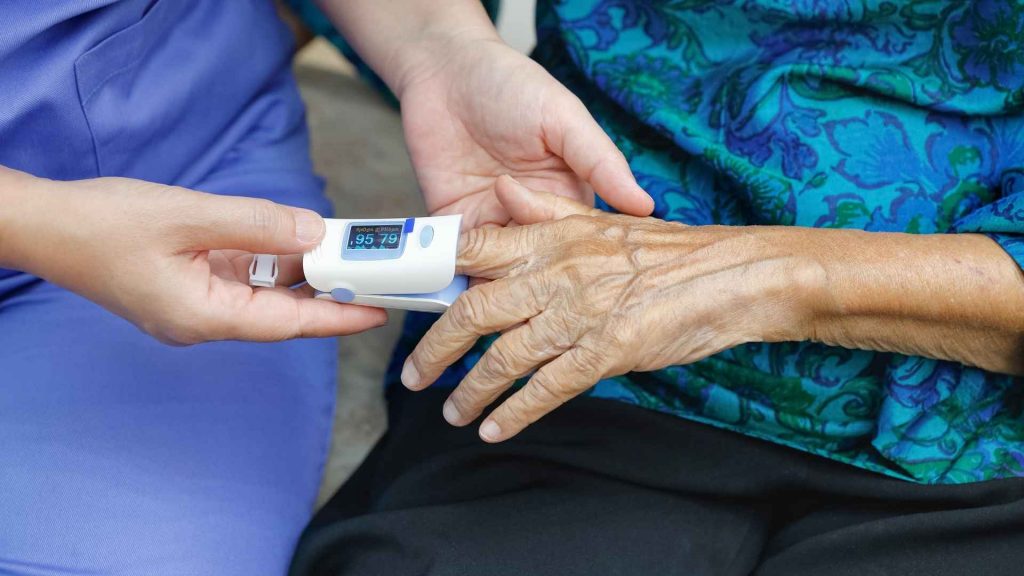
Oxygen saturation monitoring is a simple process that can provide the doctor with a quick, accurate reading of the patient's blood oxygen levels. This device uses a probe that is placed on the patient's wrist or finger. They don't use needles and do not cause pain. Some hospitals even use disposable tape probes. The device measures both the heart rate and the oxygenation level of the patient's blood. Here are some tips on how to choose the right one for you:
Make sure to use the device correctly. Follow the instructions on your box. The fingertip oximeter should be held with your thumb, forefinger, and warm water bottle on the other. Before inserting the oximeter into the skin, remove any fingernail polish. The fingertip oximeter should be held still until it reaches its maximum value. If the reading changes, write down the number and notify you health care provider.
Oxygen saturation monitors are great for kids and can help parents encourage healthy lifestyle habits. The ChoiceMMed C5X series is made specifically for children, and the C6X series is a high-quality, durable alternative. A Bluetooth-enabled oximeter is a good choice for those who want to use the oximeter with their smartphone. These devices can store up to 24 hours of data, and they can be used by the patient or a doctor.
How should the oxygen saturation monitor look like?
If you are worried about your health and want to track your blood oxygen levels, an oxygen saturation monitor is the best way to do it. A doctor can do this by taking a blood sample and running a breathing test to measure blood oxygen levels. These tests are very accurate, and they will tell your doctor if something is wrong. You should also keep your notes so you can show your doctor if you need to take any action. The results from an oxygen monitor are generally reliable and can be extremely helpful in determining the health status of a patient.
The accuracy of oxygen saturation monitors is essential. Your Sp02 level should range from 95 to 100 percent. You should also consult with a doctor if you are not sure what is normal for you. An oxygen saturation monitor is a great tool to help you stay fit. It can also be used to diagnose medical conditions. It is crucial to seek medical attention immediately if the Sp02 level drops below 95 percent. Your blood oxygen levels could be dangerous and you should consult a doctor.
The Sp02 reading from an oxygen saturation monitor is the most accurate for an adult. A healthy person should have a Sp02 reading between 95 and 100 percent. However, this can vary for people with certain conditions. Therefore, it is best to check with your physician if your Sp02 is below this level. A home device should be used only for general fitness. It is not a diagnostic tool. It is useful for your health.
The Sp02 level should be between 95 and 100 percent. Patients with certain conditions may need to know this number. A high Sp02 level should be considered normal. A reading below 95 percent should be reported to your doctor immediately. An oxygen saturation monitor will give you the best reading. It will give your doctor the information you need to determine if you have a condition that affects your blood pressure.
Oxygen saturation monitors are easy to use and require no blood samples. The finger oximeter is the most convenient. The finger oximeter is a good choice for kids as it is comfortable and will not hurt the baby's skin. Asthma patients should see their doctor immediately if they are concerned about their Sp02 levels. Low Sp02 can have serious consequences. You should consult your doctor immediately.
Children are the best target audience for some of the most effective home devices. The ChoiceMMed C5X series has a comfortable case to encourage kids to use the Oxygen Saturation Monitor. The Berry Medical BM1000 Bluetooth-enabled model records data and can store up to 24 hours. The Apple watch is a good choice for children who are young because it has a longer battery life. An oximeter is a great investment.
For more information, click here: https://www.cardiacsense.com/oxygen-saturation-monitor/
